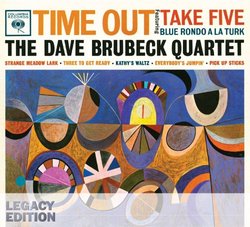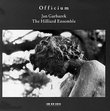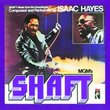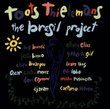| All Artists: Dave Brubeck Title: Time Out -50th Anniversary (2 CD/1 DVD Legacy Edition) Members Wishing: 2 Total Copies: 0 Label: Sony Legacy Original Release Date: 1/1/2009 Re-Release Date: 5/26/2009 Genres: Jazz, Pop Style: Cool Jazz Number of Discs: 3 SwapaCD Credits: 3 UPCs: 886973985229, 886975294626 |
Search - Dave Brubeck :: Time Out -50th Anniversary (2 CD/1 DVD Legacy Edition)
 | Dave Brubeck Time Out -50th Anniversary (2 CD/1 DVD Legacy Edition) Genres: Jazz, Pop
The first million-selling album in jazz history. 1959 was a banner year for jazz, but no album captured the public's attention like Dave Brubeck's Time Out. "Take Five," the surprise radio hit from Time Out, would enter th... more » |
Larger Image |
CD DetailsSynopsis
Album Description The first million-selling album in jazz history. 1959 was a banner year for jazz, but no album captured the public's attention like Dave Brubeck's Time Out. "Take Five," the surprise radio hit from Time Out, would enter the record books as the first million-selling jazz instrumental single on the Billboard Hot 100, and "Blue Rondo à la Turk" would become an instant classic. This edition marks the 50th anniversary with an unprecedented presentation of music, images, insight and history, including the chance to hear the classic Brubeck Quartet in top form live at Newport, plus a companion DVD offering a fresh take on the making of this pioneering recording. The experimental meters of Brubeck's music set Time Out apart from the pack. But the appeal of this album--in 1959 and today--is less in the rules it broke, and more in the sheer sweep and effervescence and pure unadulterated fun of the music. For all his seriousness and ardor, Dave Brubeck had somehow recaptured a sense of childlike wonder in this project. And for that reason, the decades may pass and tastes may change, but it will always be the right time for Time Out. Similarly Requested CDs
|
CD ReviewsTIME OUT-50th ANNIVERSARY Stuart Jefferson | San Diego,Ca | 05/26/2009 (4 out of 5 stars) "Two discs 38 and 54 minutes each approximately. The sound is immediate with good separation between the piano,which is crisp,the alto sax which is light and airy,and the rhythm section,which has a good deep end to it's sound. The booklet has a number of photographs of the band and gives the background on this (at the time) monumental release. The DVD is approximately 30 minutes in length,on the making of the album,interview with Brubeck and other footage. Anyone with even a passing interest in jazz will have heard either "Take Five",or this entire album. It's certainly one of the best selling albums in the jazz field,and shows no indication of slowing down anytime soon. What makes this release something to purchase is the entire second cd,which is THE DAVE BRUBECK QUARTET LIVE AT NEWPORT,1961,1963 and 1964,with the same personnel who played on the original studio album. This disc contains the usual "hits" then popular from this group,along with several other tracks. Live this group sounds a bit more alive,and not quite as academic as they sometimes tend to sound on studio recordings. Live,this music will put a smile on your face and set your foot to tapping. And that's what this album is all about-great jazz played with style and fine musicianship,yet it still has that cool,yet "good-time" feel. This album so caught the public's attention,because of a couple of popular tunes,that much of the sophisticated arranging and playing was missed by listeners. At the time the rhythm patterns in most of the compositions were very advanced-not many had played jazz in the time signatures that Brubeck and his group did on this album. For those who like this album,the extra disc is certainly worth owning. Not only will you have one of the best,most popular jazz albums of all time,you'll also have some very fine live jazz,which makes this release the one to own." A classic - revisited, expanded, enriched Joe Sixpack -- Slipcue.com | ...in Middle America | 06/03/2009 (5 out of 5 stars) ""Time Out -50th Anniversary Legacy Edition" (Sony-BMG Legacy, 2009) ------------------------------------------------ Dave Brubeck's landmark 1959 album, "Time Out," is perhaps the defining record of the so-called West Coast jazz sound, a playful, dynamic set that concentrates on melody and formal composition over muscularity and improv, and (for many) a welcome step back from the aggressive hurly-burly of the more macho bebop and post-bop scenes. Even though it was an experimental concept album -- toying with unusual time signatures -- it's a comfortable, comforting record, best remembered for the hit song "Take Five," but also packed with other melodic delights such as "Three To Get Ready" and "Blue Rondo A La Turk," all of which show the brilliant interplay of Brubeck and saxophonist-composer Paul Desmond, bassist Eugene Wright and drummer Joe Morello. Over the years, I've gathered many copies of this delightful album. I accidentally acquired three copies on vinyl (it's so pretty!) and likewise, bought two copies on CD before I knew what had happened. And now comes this 3-disc Legacy edition, which includes the original album along with a second disc of lively performances from the 1961-64 Newport Jazz festivals (familiar songs given added live oompf) and a third disc that has the music on DVD, along with a modest but illuminating documentary in which Brubeck reminisces about the making of the "Take Five" album and its impact on his career. In the short film, which was shot in 2003, Brubeck takes goodnatured pot-shots at the late Paul Desmond (with whom he frequently bickered about musical ideas) and recalls the chilly reception that the record met with at Columbia Records: the company's president, Goddard Lieberson, was its sole champion, and "Take Five" wasn't even released as a single until after jazz DJs made it popular on their shows(!) Brubeck also discusses the inspirations he found for various songs, from nature and from other cultures (as in the case of "Blue Rondo A La Turk") and even sits down at the piano to show that age 83, he's still got serious chops. He's a charming old fellow, full of humor and life, and this set is a nice expansion of the legacy he, and this album, have left for the world. (DJ Joe Sixpack, Slipcue Music Guide)" How could it be less than 5 stars? Richardson | Sunny California USA | 05/27/2009 (5 out of 5 stars) "I agree with the other very well written review...
it IS one of the classic Jazz albums of all time with major cross over appeal and on top of it we get a stunning compliment of unreleased LIVE versions and a skimpy yet fun DVD with interview and demonstration...so why 4 stars? As I said...I agree with the fellow from San Diego...the sound is very well presented ,particularly for a 50 year old recording, the repertoire is classic and there is bonus material....all for about 20 bucks...WOW...I say 5 stars all the way. The couple of DVDs available of the classic quartet are also worth owning and highly recommended..Paul Desmond was a one off player in my book." |

 Track Listings (7) - Disc #1
Track Listings (7) - Disc #1


